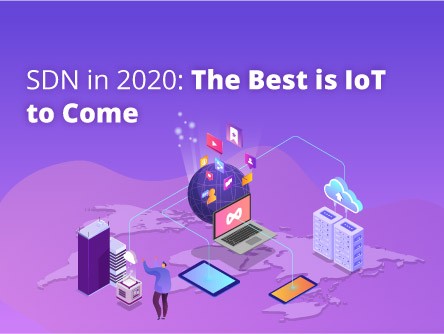The strengths of Software Defined Networking (SDN) over hardware-defined networking are now well known.
In a recent report by IDC it is stated that data centre SDN is now so established, it “no longer attracts breathless hype and fevered expectations, but the market is growing healthily, and its prospects remain robust.”
SDN will be increasingly perceived as a form of established, conventional networking, to be worth more than US$12bn by 2022, recording a CAGR of 18.5 per cent. In 2017 alone, the market generated revenue of nearly US$5.15bn.
SDN promises to reduce the complexity of rigid legacy networks, allows for simpler provisioning and management of resources, and best of all, it makes automating network functions a breeze.
The magic word “automation” now translates into Artificial Intelligence (AI) and Machine Learning (ML)—the two transformational technologies driving Industry 4.0 and global disruption. That is to say, SDN is gaining the momentum to perfectly propel digital transformation technologies next year and beyond.
IoT on steroids: powered by SDN
An SDN architecture centralises and abstracts control and automation of workflows through network function virtualisation (NFV), making it ideal for optimising cloud computing, distributing computing power to remote sites, moving data centre functions to the edge, and supporting Internet of Things (IoT) environments.
In a 2017 research paper, network experts expect SDN intrinsically programmable nature to mitigate IoT’s lack of programmability and centralised network control, and to help establish ultra-smart IoT/Industrial IoT ecosystems. The paper noted that companies spent around US$656 billion on IoT in 2014 but this would rise to $1.7 trillion in 2020. The paper also estimated that there will be a 90 percent rise in the installation of intelligence and smart connectivity in cars till 2020, compared to only 2 percent in 2012.
Clearly, intelligent IoT and digital transformation have to hinge on integrating networks on the software layer rather on hardware. Even the impending widespread adoption of 5G is expected to pivot exclusively towards programmable virtualised networking models.
Meanwhile, on another SDN technology development front, Gartner has already predicted that by 2020, more than 1,000 large enterprises will use an evolved form of SDN called intent-based networking (IBN) in controlling automated self-driving cars, production lines and other workflows that benefit from minimal human intervention.
Similarly, the ability of SDN admins to split up a network connection to use different security settings for different types of network traffic is already helping enterprises beef up security stances. If network data is moved to the edge, deployments can also be cheaper than via off-the-shelf white boxes versus traditional hardware and cloud platforms.
Meanwhile, SDN’s micro-segmentation capability isolates workloads and offers granular protection compared to the coarse-grained security of virtual LANs (VLANs), firewalls and access control lists.
Interconnecting SDN for on-demand global connectivity
The power and promise of SDN scales up as it becomes a global mainstay. As a further demonstration of this, we have seen the use of application programme interface (API) for integrating service providers’ platforms in recent years. One such example is Epsilon’s partnership with Chinese on-demand connectivity provider, DCConnect back in June 2018, interconnecting SDN platforms and deliver two-way inter-carrier SDN network orchestration.







